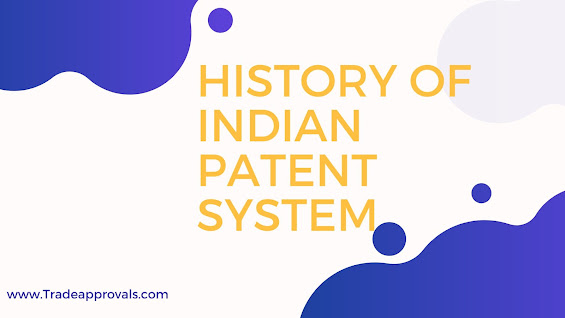History of the Indian Patent System
The History of the Indian Patent System in India can be
traced back to the colonial era and has undergone significant developments
since its inception. Here is a complete summary of the history with headings:
The Indian
Patents and Designs Act, 1911
In 1911, the Indian Patents and Designs Act was enacted,
providing certain improvements to the patent system. It introduced compulsory
licensing provisions, allowing the government to grant licenses to third
parties to use patented inventions in specific circumstances, such as public interest
and non-exploitation.
Independence
and the Patents Act, 1970
After India gained independence in 1947, the Indian
government recognized the need for a patent system that would support domestic
innovation and address the country's developmental needs. As a result, the
Patents Act, of 1970 was enacted. It aimed to foster indigenous technological
growth while balancing the interests of inventors, industry, and the public.
Introduction of Process Patents and the Mailbox System
The Patents Act, of 1970 brought significant changes to the
Indian patent system. It abolished product patents for chemicals,
pharmaceuticals, and food, allowing only process patents for these sectors.
Additionally, the Act introduced the concept of the "mailbox system"
to handle patent applications related to pharmaceuticals and agrochemicals that
were not patentable at the time due to product patent restrictions.
TRIPS
Agreement and Amendments (1995 onwards)
In 1995, India became a signatory to the Agreement on
Trade-Related Aspects of Intellectual Property Rights (TRIPS) under the World
Trade Organization (WTO). As part of its TRIPS obligations, India made
amendments to its patent laws. These changes included reintroducing product
patents in all fields, extending patent terms, and strengthening intellectual
property protection.
Compulsory
Licensing and Patentability Criteria
The Patents Act, of 1970 also included provisions for compulsory
licensing, allowing the government to authorize the use of a patented invention
without the consent of the patent holder in certain circumstances, such as
emergencies, national security, or non-working of the patented invention.
Additionally, the Act outlined criteria for patentability, including novelty,
inventive step, and industrial applicability.
Recent
Developments
In recent years, India has continued to make updates to its
patent system. It has implemented policies to expedite patent examination,
enhance patent quality, and improve the functioning of the patent office. Furthermore,
the Indian government has been promoting innovation and entrepreneurship
through various initiatives, such as the "Make in India" campaign and
Startup India.
In conclusion, the history of the Indian Patent System
reflects the country's journey from a colonial-era patent regime to a system
focused on indigenous innovation and public interest. The changes made over
time have aimed to strike a balance between incentivizing inventors, promoting
domestic industries, and safeguarding public welfare.
Trade Approvals provide the fastest company registration services with the highest approval rate and at an affordable cost.

.png)

Comments
Post a Comment